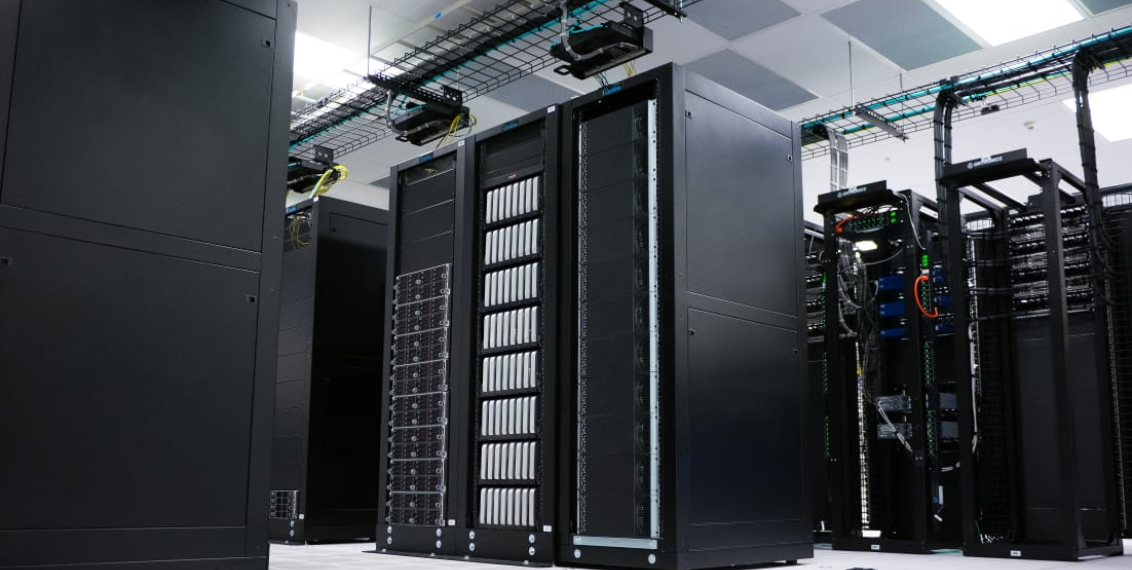
Over the past several years sustainability has become a growing priority for most, if not all, organisations. Forward-thinking businesses, consumers and governments alike are increasingly looking at how to increase their sustainability efforts, while many decisions are increasingly being made with enhancing sustainability as an important driver.
One key trend to this end for businesses is moving to hybrid cloud services including colocation. In simple terms, colocation entails renting out a dedicated space for servers and sharing that space with others.
Doing so combines a wide range of operational and commercial benefits with potentially substantial sustainability improvements.
Data centres have long been recognised as being a major consumer of global energy. In 2020, they represented nearly half (47%) of IT energy demand and is expected to grow further to 61% before the end of the decade.
Colocation is a viable solution to this issue for several reasons: it meets the exacting requirements of the IT team, makes clear cost-saving sense, and opens up greener ways of hosting and processing data.
As a growing number of organisations are looking to upgrade their legacy infrastructure and move their network and server operations off-site, outsourcing to colocation services also makes sense – it frees up significant budget and space, while improving energy efficiency and reducing overall complexity.
For organisations that already have a sufficient IT strategy and expertise in-house, it’s an ideal arrangement. Their IT team retain control of their network, servers, and storage, enabling them to manage costs and monitor performance, while the third-party provider takes charge of physical expenditure like cooling, power, bandwidth and building maintenance.
Crucially from a cost point of view, the organisation only pays for the resources it uses.
The IT benefits of colocation are particularly compelling. Going the colocation route delivers easy and cost-effective connections to multiple network and Internet providers, guarantees reliability of available power with protection from outages, and organisations have the flexibility to scale up and down easily — using only the space and power required at a given time.
Colocation also reduces the need for costly real estate and tenancy agreements, and many providers offer certified physical security as well as cybersecurity, ensuring protection against risks like fire, unauthorised access or theft, and the ever-present threat of cyberattacks.
While these benefits may represent the proverbial ”carrot” to move to colocation, there are also drivers that represent the ”stick.” For example, as the urgency around climate change grows, the environmental regulations and demands for carbon reporting placed on organisations globally will only increase.
The European Union has launched the Assessment Framework for Data Centres as part of the European Taxonomy highlighting the need for computing to become more energy efficient, with measures being put forth to enforce green data centres which rely on renewable energy and reuse waste energy sources such as heat.
And then there are soaring energy prices that continue to reach record levels amid the reality of reduced supply.
This is adding pressure on organisations to reduce their energy consumption. Multinational and local players who are expanding their footprint in Africa are already looking at benchmarks for sustainable interventions from design through construction and operations of new data centres, as decarbonisation and the drive towards net zero advances across the continent.
The good news is that the adoption of new digital technologies enabled by 5G, fibre and cloud computing could help the tech sector reduce its global carbon emissions by 40% before 2030.
In fact, colocation has a great deal to offer when it comes to enhancing sustainability. For example, a combination of greater hardware efficiency, compute utilisation and more sustainable software engineering is driving improved power usage effectiveness.
We are also seeing colocation taking place in purpose-built facilities that are strategically located near reliable sources of power and designed with high-density cooling in mind.
Additionally, the sector is making a collective effort to reach 100% renewable electricity for their cloud platforms across several geographies as they drive continued efficiencies in their data centres. Increasingly, providers are incorporating alternative and renewable sources of electricity such as solar, wind, hydro and geothermal heat. Some colocation providers are also innovating by replacing backup generators with sustainable alternatives such as renewable powered battery storage and fuel cells.
Further, colocation providers are making a concerted effort to embrace a circular economy, recycling hardware and exploring new strategies for water management and heat recovery to reduce their reliance on the electrical grid and minimise waste across their operations.
This is also buoyed by a strong effort to move data to the edge. Doing so significantly reduces the volume of traffic going back to the centralised data centre and thus requires fewer physical resources to support it, such as servers, cooling, and power.
When targeting colocation, organisations should ensure they select a partner that has the right credentials in place such as a Science Based Target, CDP rating or equivalent as well as those that are transparent around key metrics such as Power Usage Effectiveness (PUE), Renewable Energy Factor (REF), and Water Usage Effectiveness (WUE). Additionally, partners should have the ability to design sustainability from the ‘network up’ into the colocation data centre by taking into consideration what can be virtualised and right-sizing capacity for equipment.
The bottom line is that colocation is a truly viable way for organisations to avail themselves of all the benefits of having a data centre and using their data for business advantage, while similarly doing their part to ensure that thriving in a digital economy is as environmentally friendly as possible.







Comments 1